10" touchscreen monitor + 4" Linux PC = MimoPlug
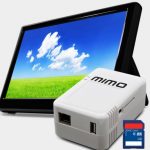
Mimo Monitors, the company best recognized for its USB-powered touchscreen mini-monitors released an equally miniature Plug computer on Monday called MimoPlug.
Based on Marvell's Sheeva plug computer design, the MimoPlug has a 1.2GHz CPU and 512 MB of DDR2 RAM. Like other plug computers using Marvell's design, MimoPlug uses a (4.33" x 2.74" x 1.9") fanless chassis with integrated power supply, and has a single Cat5 ethernet port and USB 2.0 port. Unique to Mimo's platform, however are its storage options. MimoPlug features an SD card slot which comes with a 4GB, 8GB, or 16GB MimoPlug GUI SD card that is partially dedicated to driving the 10" touchscreen mini-monitor with Debian Squeeze and Gnome Desktop. Users also have the option of a MimoPlug with an eSata II port.
HP executive shakeup prioritizes China, India, and the cloud
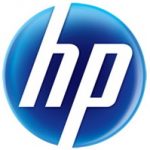
Market-leading IT company Hewlett-Packard (HP) announced Monday that it will be reorganizing its corporate structure to fit with the strategy shift it announced last March. Moving forward, HP is prioritizing three businesses -- hybrid cloud solutions, connected devices, and Management/Security/Analytics software -- and this executive shift is a reflection of that.
Priority 1: Customer-Facing businesses
Microsoft builds mini Twitter analytics app for Excel 2010 and PowerPivot

Microsoft has released a tool called Microsoft Analytics for Twitter that lets users build their own mini Twitter analytics engine for the Excel 2010 add-in PowerPivot.
This free add-in lets users query Twitter from within Excel 2010 and then build their own dashboard of Twitter statistics with the PowerPivot analytics plug-in. The application has been designed to let users track up to five concurrent search queries including #hashtags, @mentions, keywords, usernames, or any of Twitter's Search Operators, and analyze them with PowerPivot, which includes the ability to gauge the "tone" of a tweet (whether it's favorable or negative) based on customizable parameters.
Nvidia closes deal with Icera, acquires baseband tech for Tegra 2
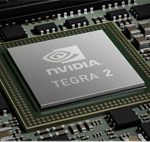
Another major move in the mobile processor space took place on Monday as Nvidia, maker of the popular Tegra 2 applications processor for mobile tablets and smartphones, announced it had completed its acquisition of Icera, a wireless modem company specializing in baseband technology for smartphones and tablets.
The $367 million cash acquisition will give Nvidia an applications processor with bundled baseband and RF chips that will give device manufacturers a single option to cover both of their onboard processor needs in a single package. For example, the Icera modem solution called Espresso 450 for smartphones and tablets uses Nvidia's Tegra processors, includes the radio interface layer for Android, and includes multiband HSPA+, HSUPA, and quad-band GPRS/EDGE radios.
Spanish cops ask for trouble, say they've nabbed 3 Anonymous hackers

Spanish national police have arrested three individuals responsible for hacking Spanish banks BBVA and Bankia, Italian energy company Enel and the governments of half a dozen different countries in Europe, South America, the Middle East and Africa, and Oceania. Officials believe the three men were members of Anonymous, a quasi-hivemind "hacktivist" group that has been blamed for the repeated attacks on Sony's PlayStation Network.
The three men were arrested in Barcelona, Almería and Alicante after they attempted to carry out a DDoS attack on the websites of Spain's two main political parties as well as the Spanish parliament on the eve of election day. The server they used to orchestrate these attacks, as well as ones against the website of Spain's central election commission and the Catalonian police force, was confiscated.
How much does it cost to migrate a government agency to the cloud?

This week, the National Oceanic and Atmospheric Administration (NOAA) of the U.S. Department of Commerce announced it is migrating its 25,000 e-mail inboxes to a cloud-based solution which will integrate calendar, contact, and collaboration tools. The total cost of the migration will be $11.5 million for three-years, contracted to Earth Resource Technologies (ERT), a Maryland-based science and technology contractor who also works with NASA, USAID, and the Army Corps of Engineers.
"The cost to the taxpayer will be 50 percent less than an in-house solution," said NOAA Chief Information Officer Joseph Klimavicz. "As the new standard, cloud computing has great value allowing us to ramp up quickly, avoid redundancy and provide new services and capabilities to large groups of customers."
Ex T-Mobile UK workers fined for stealing and selling customer info

The pair of T-Mobile UK employees who stole confidential subscriber data and sold it to a rival wireless company in 2008 were hit with £73,700 ($121,000) in "fines and confiscation costs" this week as a part of their hearing at Chester Crown Court (Case# T20100382), if the fines are not paid, the men face up to 18 months in prison.
The former employees, David Turley and Darren Hames, pled guilty last year to multiple violations of Section 55 of the UK's Data Protection Act of 1998. This section of the act makes it a criminal offense to "knowingly or recklessly obtain or disclose personal data or information without consent of the data controller."
Motorola's Photon 4G has a kickstand, and you know what that means...
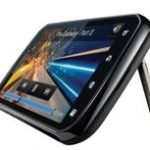
Motorola on Thursday unveiled its first WiMAX-capable Android Smartphone which also happens to be Sprint's first dual-core device from Motorola, Photon 4G.
The specs of Photon 4G are indeed impressive. It has a 4.3" (540 x 960) touchscreen display, dual-core Nvidia Tegra 2 Processor, 1GB of RAM, 16GB of storage with microSD support up to 32GB, worldwide GSM roaming, dual cameras (8MP/720p with dual flash, VGA), Android 2.3, mobile hotspot capability and and Motorola's impressive Webtop functionality first showcased by Atrix 4G. It is expected to launch later this summer, when Sprint will announce pricing and accessory support.
Texas Instruments designs $5 wireless headphones with 22-hour battery life

Thursday, American chipmaker Texas Instruments unveiled a new 2.4GHz wireless audio streaming chip and wireless headset development kit designed for portable audio players and audiophile-level consumer audio solutions. Texas Instruments says the headphone reference design is capable of 22 hours of usage (double the current average battery life) with an electronic material cost of only $5.
At just about one year old, Texas Instruments' PurePath Wireless audio family is a low-power Radio Frequency protocol in the unlicensed 2.4GHz ISM band like Bluetooth, WLAN, Zigbee, ANT, and RF4CE.
Microsoft shuts down My Phone, Marketplace for Windows Mobile 6.x

Microsoft is sending notifications to Windows Mobile 6.x users this week that it is discontinuing My Phone service, and shutting down the Windows Marketplace for Mobile site for the legacy mobile OS family.
Beginning on July 15, http://marketplace.windowsphone.com will
no longer be open for business, and apps for Windows Mobile 6.x will only be available in the Marketplace app or through third party app stores.
Winamp for Android update brings more free stuff to its 4 million users

We selected Winamp as one of Android's 15 best apps for 2010 because it offered wireless music syncing, music control from the lock screen, and integration with SHOUTcast streaming radio. Today, the music management service has received a number of updates that concentrate on delivering more free content.
Firstly, the app is now integrated with AOL Music's Full CD Listening Party which lets users stream the week's new featured albums in their entirety for free.
Google Maps can now track buses and trains in real time

The Google Maps team on Wednesday announced an update to both Google Maps for Android 1.6+ and Google Maps for desktop that incorporates real-time mass transit data, letting users not only plot their bus and train routes, but also track them in real time.
Currently, the live transit data is only available in six cities worldwide: Boston, Portland (Oregon), San Diego, San Francisco, Madrid (Spain) and Torino (Italy) and the tracking feature is tied into transit stations included on the map.
Consumer tablets can kill the office desk phone, says CounterPath
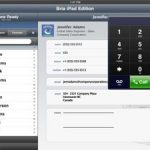
One year ago, we took a look at CounterPath's Bria softphone clients for PCs and mobile devices. Today, CounterPath has released Bria iPad Edition 1.0, which the company believes is a perfect example of effective IT consumerization because it strikes a balance between the feature-heavy, yet immobile desk phone and the versatile, yet feature-light consumer smartphone-based VoIP.
"The deskphone…looks ill-suited for today's work style, where employees need anytime, anywhere access to voice and data --exactly the kinds of applications where a tablet shines," a CounterPath representative said today. "[But] VoIP applications for tablets have been clunky and user-unfriendly to the point that they undermine the responsiveness and productivity they're supposed to enhance."
HP earmarks $2 billion to finance hybrid cloud projects

HP Financial Services, a subsidiary of leading information tech hardware company Hewlett-Packard, announced it will be making up to $2 billion available to "help clients finance their way into the cloud."
According to Forrester Research, business IT investment was up between 8.9% and 11% in 2010, but based upon recent trends, growth in 2011 is expected to slow to only around 8%.
Nintendo unveils Wii U, a 6.2" Wii Tablet
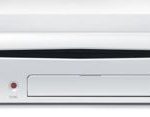
Nintendo debuted its newest piece of gaming hardware, Wii U, a touchscreen tablet and game controller that takes the dual-screen gaming concept of the DS and applies it to the television.
Wii U includes a 6.2" touchscreen tablet with dual analog circle pads, a D-pad and buttons, rumble support, a microphone and speaker, accelerometer, gyroscope, and forward-facing camera which are all used to communicate with a 1080p HD set top box that stylistically looks like an update to the current Wii console.
Tim's Bio
Tim Conneally was born into dumpster tech. His father was an ARPANET research pioneer and equipped his kids with discarded tech gear, second-hand musical instruments, and government issue foreign language instruction tapes. After years of building Frankenstein computers from rubbish and playing raucous music in clubs across the country (and briefly on MTV) Tim grew into an adult with deep, twisted roots and an eye on the future. He most passionately covers mobile technology, user interfaces and applications, the science and policy of the wireless world, and watching different technologies shrink and converge.
© 1998-2025 BetaNews, Inc. All Rights Reserved. About Us - Privacy Policy - Cookie Policy - Sitemap.
